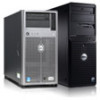Dell PowerEdge T610 Hardware Owner's Manual - Page 46
PCIe device BIOS Option, UEFI Boot Manager
 |
View all Dell PowerEdge T610 manuals
Add to My Manuals
Save this manual to your list of manuals |
Page 46 highlights
Table 1-2. System Messages (continued) Message Causes Corrective Actions No boot device available Faulty or missing optical drive subsystem, hard drive, or hard-drive subsystem, or no bootable USB key installed. Use a bootable USB key, optical drive, or hard drive. If the problem persists, see "Troubleshooting an Optical Drive," "Troubleshooting a USB Device," "Troubleshooting an Internal SD Card," and "Troubleshooting a Hard Drive." See "Using the System Setup Program and UEFI Boot Manager" for information on setting the order of boot devices. No boot sector on hard drive Incorrect configuration settings in System Setup program, or no operating system on hard drive. Check the hard-drive configuration settings in the System Setup program. See "Using the System Setup Program and UEFI Boot Manager." If necessary, install the operating system on your hard drive. See your operating system documentation. No timer tick interrupt Faulty system board. See "Getting Help." PCI BIOS failed to install PCIe device BIOS (Option ROM) checksum failure detected during shadowing. Cables to expansion card(s) loose; faulty or improperly installed expansion card(s). Reseat the expansion card(s). Ensure that all appropriate cables are securely connected to the expansion card(s). If the problem persists, see "Troubleshooting Expansion Cards." 46 About Your System















